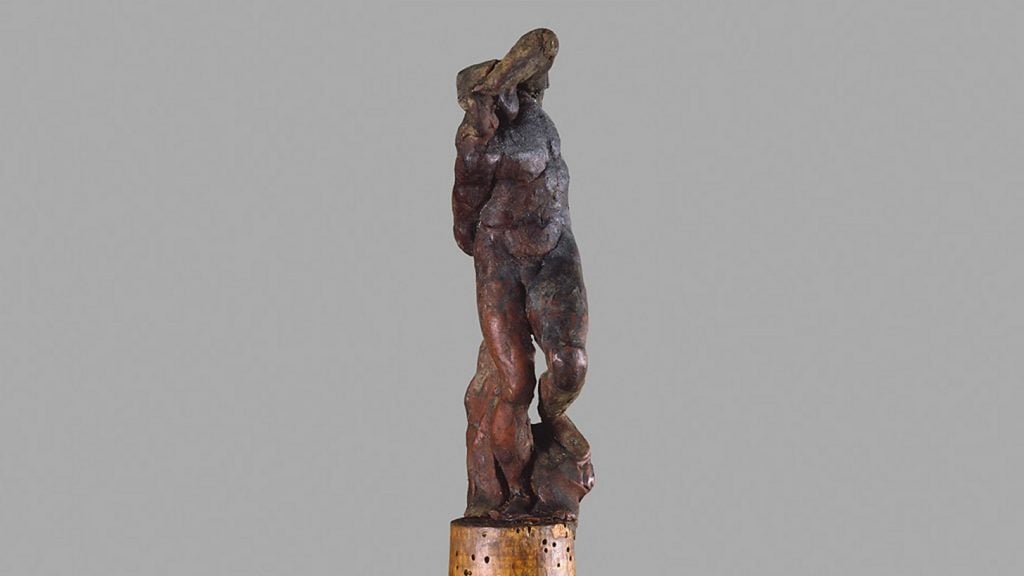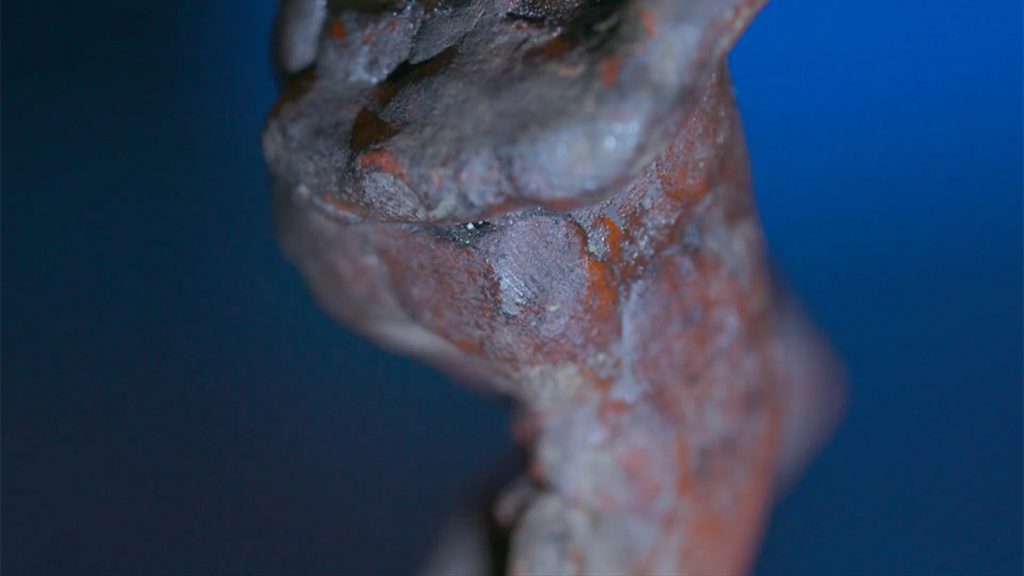Art World
The Victoria and Albert Museum Says It Has Spotted Michelangelo’s Thumbprint, Preserved in Wax, on One of His Sculptures
The long-hidden mark likely appeared on the delicate wax sculpture due to changes in temperature or humidity.

The long-hidden mark likely appeared on the delicate wax sculpture due to changes in temperature or humidity.

Sarah Cascone

London’s Victoria and Albert Museum believes it has discovered Michelangelo’s thumbprint on the surface of a small wax sculpture by the Italian Renaissance master.
The find was revealed in the first episode of Secrets of the Museum, a new series on BBC Two. Last spring, conservators moved the delicate work from an upper gallery to cooler basement storage to protect it from rising temperatures while the museum was closed during lockdown.
Wax sculptures “start sweating and looking uncomfortable” and staffers “get anxious” during a heatwave, Peta Motture, the museum’s senior curator, told the Radio Times. “The galleries are south facing and in summer there can be sustained heat.”
Five months later, the sculpture was returned to the galleries. That’s when curators noticed a fingerprint on the figurine’s buttocks, which had likely become visible thanks to changes in the chemical composition of the wax caused by fluctuating temperature or humidity levels.

The V&A has discovered a fingerprint on the butt of Michelangelo’s Wax model of a slave (ca. 1516–19). Photo courtesy of Victoria & Albert Museum, London.
“It is an exciting prospect that one of Michelangelo’s prints could have survived in the wax. Such marks would suggest the physical presence of the creative process of an artist. It is where mind and hand somehow come together,” Motture told the BBC. “A fingerprint would be a direct connection with the artist.”
The 500-year-old statue was a study for a much larger marble sculpture of a slave intended for the uncompleted tomb of Pope Julius II at St. Peter’s Basilica in the Vatican in Rome. The ambitious design was imagined with 40 figures.
Michelangelo only began carving the front of the full-size slave statue, now part of the collection Galleria dell’Accademia in Florence, but the wax version—one of only a handful of his surviving preparatory models—offers insight to the artist’s unrealized vision.
“It was never intended to last, that’s what is quite charming and quite remarkable about it. The artist probably had no clue it would survive for several more centuries beyond him,” V&A curator Victoria Oakley told the Telegraph. (The artwork underwent a delicate repair job after a visitor knocked over and shattered the figurine in 1924.)
Should the fingerprint prove to be Michelangelo’s, that would go a long way toward resolving lingering questions about the figurine’s authenticity.